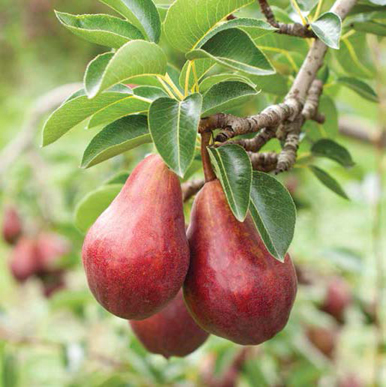Published in 2016 by Cavendish Square Publishing, LLC
243 5th Avenue, Suite 136, New York, NY 10016
Copyright 2016 by Cavendish Square Publishing, LLC
Third Edition
No part of this publication may be reproduced, stored in a retrieval system, or transmitted in any form or by any means electronic, mechanical, photocopying, recording, or otherwisewithout the prior permission of the copyright owner. Request for permission should be addressed to Permissions, Cavendish Square Publishing, 243 5th Avenue, Suite 136,
New York, NY 10016. Tel (877) 980-4450; fax (877) 980-4454.
Website: cavendishsq.com
This publication represents the opinions and views of the author based on his or her personal experience, knowledge, and research. The information in this book serves as a general guide only. The author and publisher have used their best efforts in preparing this book and disclaim liability rising directly or indirectly from the use and application of this book.
CPSIA Compliance Information: Batch #WS15CSQ
All websites were available and accurate when this book was sent to press.
Library of Congress Cataloging-in-Publication Data
Bjorklund, Ruth.
Oregon / Ruth Bjorklund, Joyce Hart, Jacqueline Laks Gorman. pages cm. (Its my state!)
Includes bibliographical references and index.
ISBN 978-1-62713-172-8 (hardcover) ISBN 978-1-62713-174-2 (ebook)
1. OregonJuvenile literature. I. Hart, Joyce, 1954- II. Gorman, Jacqueline Laks, 1955- III. Title.
F876.3.B55 2016
979.5dc23
2014049214
Editorial Director: David McNamara
Editor: Fletcher Doyle Copy Editor: Rebecca Rohan
Art Director: Jeffrey Talbot
Designer: Joseph Macri Senior Production Manager: Jennifer Ryder-Talbot
Production Editor: Renni Johnson
Photo Research: J8 Media
The photographs, maps, and illustrations in this book are used by permission and through the courtesy of: Josemaria Toscano/Shutterstock.com, cover; Peter Arnold, Inc./Alamy, 4; Candus Camera/Shutterstock.com, 4; D. Hurst/Alamy, 4; Leroy Simon/Visuals Unlimited/Getty Images, 5; Bruce Coleman Inc./Alamy, 5; Peter Lilja/Getty Images, 5; Peter Kim/Shutterstock.com, 6; Marc Muench/Getty Images, 8; George Ostertag/Superstock, 9; Westgraphix LLC, 10; Stock Connection/ Superstock, 11; Terry Donnelly/Getty Images, 13; Randy Wells/Getty Images, 14; Danita Delimont/Gallo Images/Getty Images, 14; Orygun/File: Mouth of Lava River Cave.jpg/Wikimedia Commons, 14; Panoramic Images/Getty Images, 15; Pfly from Pugetopolis/File: Aquarium Tunnel. jpg/Wikimedia Commons, 15; Finetooth/ File: Wallowa Lake Tramway.jpg/Wikimedia Commons, 15; Jonathan Kingston/Getty Images, 17; Greg Vaughn/Alamy, 18; Jim and Jamie Dutcher/Getty Images, 19; Mark Conlin/Alamy, 20; Jeff Rotman/Getty Images, 20; William Leaman/Alamy, 20; Corbis RF/Alamy, 21; Raciro/iStock Photo, 21; Shanna Baker/Getty Images, 21; MPI/Getty Images, 22; North Wind Picture Archives/Alamy, 24; Oregon Historical Society OrHi93065, 25; Richard H. and Adeline J. Fleischaker Collection, 1996/Bridgeman Art Library, 26; Greg Vaughn/Alamy, 29; Denis Frates/Alamy, 32; Time & Life Pictures/Getty Images, 33; Steve Satushek/Getty Images, 34; IIene MacDonald/Alamy, 34; Amoore5000/File: Farewell Bend Park, Bend, Oregon.jpg/Wikimedia Commons, 35; Serenethos/Shutterstock.com, 35; Fotosearch/Getty Images, 36; North Wind Picture Archives/Alamy, 38; Gerry Ellis/Getty Images, 39; Danita Delimont/Alamy, 41; Brian Stevenson/Aurora/Getty Images, 44; Buyenlarge/ Getty Images, 47; Frazer Harrison/Getty Images for Coachella, 48; Frazer Harrison/Getty Images, 48; WireImage/Getty Images, 48; Frank Micelotta/Getty Images, 49; Joe McNally/Getty Images, 49; Rob Kim/Getty Images, 49; North Wind Picture Archives, 50; Public Domain/File: McCants Stewart 1910.png/Wikimedia Commons, 51; D. Hurst/Alamy, 53; Bates Littlehales/National Geographic/Getty Images, 54; George Ostertag/Age Fotstock/Superstock, 54; Jamie Hooper/Shutterstock.com, 55; William Mancebo/Getty Images, 55; JPL Designs/Shutterstock.com, 56; IIene MacDonald/Alamy, 58; FogStock/Alamy, 59; Andre Jenny/Alamy, 60; Joyce Naltchayan/ AFP/Getty Images, 62; Bill Peters/The Denver Post/Getty Images, 62; Amber Lynn Lane/File: Governor Barbara Roberts.jpg/Wikimedia Commons, 62; Ravitej Khalsa, 63; MacDuff Everton/National Geographic/Getty Images, 64; National Geographic/Getty Images, 66; Bruce Forster/Getty Images, 67; AGStockUSA/Alamy, 68; George Ostertag/Superstock, 68; Cavan Images/Getty Images, 69; Scott Markewitz/Getty Images, 69; Eleana/Shutterstock.com, 70; Age Fotostock/Superstock, 72; Christopher Santoro, 74; Sherri R. Camp/Shutterstock.com, 75; American Spirit/Shutterstock.com, 75; Christopher Santoro, 76.
Printed in the United States of America
A QUICK LOOK AT OREGON
STATEHOOD: FEBRUARY 14, 1859
POPULATION: 3,831,074
State Tree: Douglas Fir
The largest Douglas fir measures more than three hundred feet. Eight out of ten evergreens in Western Oregon are Douglas firs. Named after a Scottish botanist, the Douglas fir was recognized as the state tree in 1936.
State Fruit: Pear
The first pear tree seedlings were brought to Oregon in 1847. Pear trees thrive in Oregons temperate climate and farmers produce more than eight hundred million pears each year. Varieties include Bosc, Bartlett, and Anjou. The pear became the state fruit in 2005.
State Flower: Oregon Grape
The Oregon grape plant is an evergreen bush that produces small, bell-shaped, yellow flowers in the spring and blue berries in the fall. The berries are edible when ripe. The Oregon grape, named the state flower in 1899, is common along the coast.
State Insect: Oregon Swallowtail Butterfly
This black-and-yellow butterfly is native to the Northwest. It prefers the dry, Eastern part of the state where it lives in sagebrush, especially along the Columbia, Snake, and Deschutes Rivers. It was named the state insect in 1979.
State Bird: Western Meadowlark
The western meadowlark is a sweet-sounding songbird found in native grass prairies in Eastern Oregon that migrates west in winter. It uses its long, sharp beak to peck out grubs and seeds in the soil. In 1927, school children voted to make the western meadowlark the state bird.
State Animal: Beaver
The beaver was almost completely wiped out by fur trappers. Today, the beaver is protected by state law, and can again be found along many of Oregons rivers. They are called natures engineers because of their ability to build complex dams. The beaver is Oregon State Universitys mascot.















